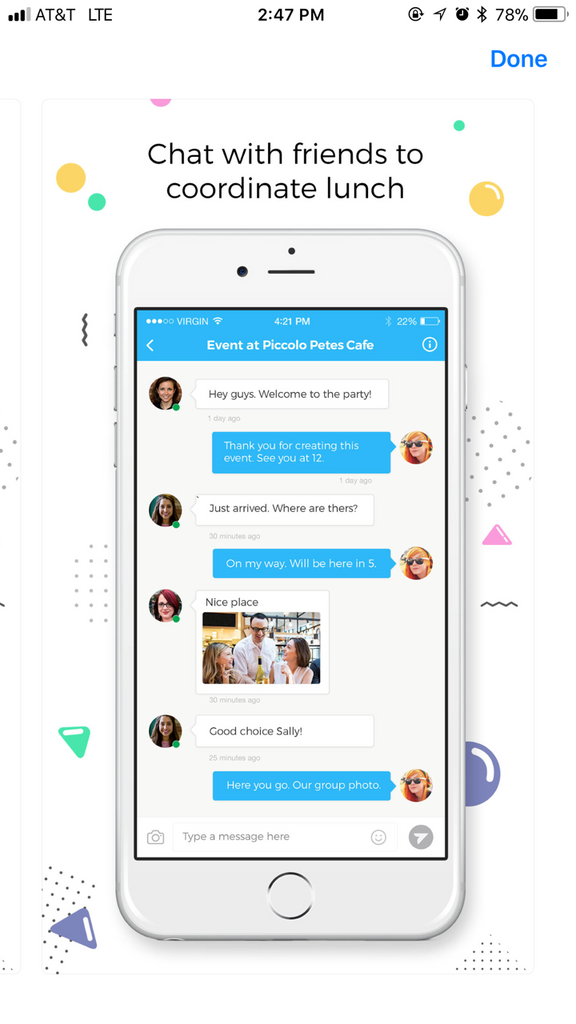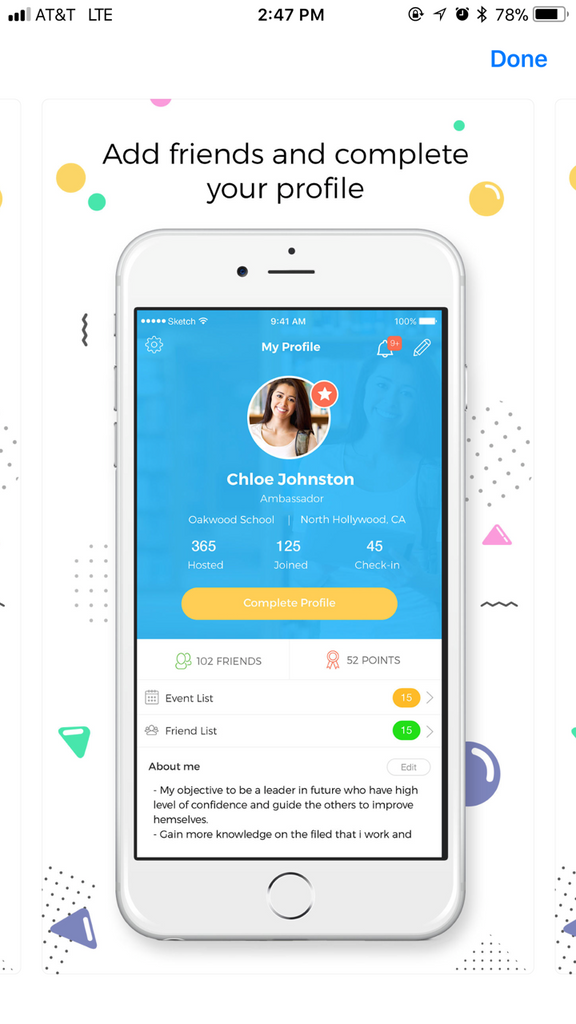It may seem that often at TW, we’re trying to tell you what NOT to do when it comes to tech.
Embrace, but cautiously.
Trust, but verify.
But as we’ve seen so often in our generation, there are occasions when technology does things that we have struggled to do on our own.
This story is about that very kind of situation. It is set against a backdrop of truly modern problems. It is about a 16-year-old girl, Natalie Hampton, who after being rejected and isolated in her school cafeteria, decided to strike back against the shame, by creating an amazing digital solution.
It’s also about another 16 year old; a promising athlete in an ultra-competitive high school; a boy in our own community whose life was cut short by suicide—but not by what you’d expect—digitally-induced cyber bullying or some other social media horror. This well-liked and outwardly successful student succumbed to the pressure to succeed and to excel in a true pressure-cooker environment, even as he worked to be welcoming and kind to others. That, on the face of it, is a decades-old story.
And it is about a third 16 year-old, who introduced me to this situation. I met Leyla Rakshani at “Real Talk” in Laguna Beach. It’s the kind of event you would expect to find in quirky Laguna; a local “Salon,” where a diverse group of people come together to discuss important cultural topics. It’s all ages and many points of view, all gathered around a large table. This particular week’s topic was especially germane to me and the TW Tribe: Teens, Screens and Social Media.
It was a lively and passionate debate about the pervasive presence of digital devices—should we have them at all? Should there be age limits? Time limits?
The conversation led us to the sadness and sorrow we felt surrounding the recent suicide of Patrick Turner. Patrick was a friend to so many, in one way or another we all felt a bond to Patrick, even never having met him. Of the three letters he left behind, explaining why he felt compelled to do what he did, it’s easy to see how truly wonderful this young man was. (We’ve published one of the letters below, to pay our respects.)
Patrick did not mention pressures from technology.
Amidst the conversation, Leyla raised her hand to provide us a piece of wisdom. She told the group that her school (Patrick’s too) mourned, but took action. And that action came in the form of technology. She needed us to hear that sometimes good can come from technology, it can be amazing and exactly what’s needed.
- ••••••••••••••••••••••••••••••••••
FOR YOUR THOUGHT
We came to find out that Patrick Turner’s suicide did not match the media’s reflection of the rapidly growing problem of teen suicides and screens. And it is a problem. After bottoming out in the early 2,000’s, teen suicides took a big turn for the worse and shot up dramatically starting in 2007. Interestingly, that is the same year the first iPhone was introduced. Smartphone usage in America rocketed from 50mm in 2007 to 350mm in 2011—a 7X increase in 4 years! If you overlay teen suicide rates over that graph you’ll see that there is a direct correlation. Pause and consider that.
Jean Twenge has written an entire book covering her findings on the generation of kids who were the first group to virtually be surrounded by smartphones. She calls them iGen. Twenge talks about how iGen kids report feeling joyless and useless. They have less face-to-face time with their friends, they are driving later, and having sex later.
Here's what Twenge says about teen suicide:
“Since 2007, the homicide rate among teens has declined, but the suicide rate has increased… as teens have spent less time with one another in person, they have also become less likely to kill each other. In contrast, teen suicide rates began to tick up after 2008… 46% more teens killed themselves in 2015 than in 2007. The rise occurred just as new media screen time started to increase and in-person social activities began to wane.
Clearly, unequivocally, parents of teens and the schools they attend need to be on high alert for signs of cyber-bullying, isolation and other iGen issues and we need to exert more control and leadership to change the trend of rising teen suicides.
- ••••••••••••••••••••••••••••••••••
But getting back to our story: Did cyber-bullying or some other sort of technological or screen-induced problem lead to the suicide of Patrick Turner?
No one knows for sure and we’re not making the connection here.
What we know about Patrick comes from the letters he wrote. Three in total. Two were made public.
From them we know Patrick was an athlete. He said he felt like “this” was something he had to do. Our hearts, as I’m sure yours, ache for Patrick and his family. He said there was so much pressure. He reflects on the pressure and notes that the pressure is put on all kids to do good. It’s so clear that Patrick had a kind empathetic heart.

One of 2 letters published on BrunersBreak.com
- ••••••••••••••••••••••••••••••••••
Back at Real Talk in Laguna, 16 year old Leyla Rakshani explained that Patrick cared about the feelings of others and had actually used an app called SIT WITH US. Another high school student in another part of California, Natalie Hampton, developed it. The app is a simple networking tool that allows any student to easily find an open place to sit with people who are open to having them join. Patrick Turner had become an ambassador on the app, meaning he was the one who set up tables for others to join. He was leading the cause of inclusion.
Leyla told us, “While Patrick was a very popular and fortunate kid, he wrote passionately on the subject of how he saw so many other kids on campus who weren’t as fortunate in finding comfortable relationship company as he was. They would be sitting alone, no one even attempting to have an interaction with them, let alone a positive one.” She told us how her peer group—like many of us probably—would rather turn down to our smartphones, instead of turning our hearts and heads outward to create new relationships.”
Lest you think this is today’s generation’s version of teenage drama, here’s what Natalie told NPR about the experiences that led her to develop SIT WITH US: “At my old school, I was completely ostracized by all of my classmates, and so I had to eat lunch alone every day. When you walk into the lunchroom and you see all the tables of everyone sitting there and you know that going up to them would only end in rejection, you feel extremely alone and extremely isolated, and your stomach drops. And you are searching for a place to eat, but you know that if you sit by yourself, there'll be so much embarrassment that comes with it because people will know and they'll see you as the girl who has nowhere to sit. So there are so many awful feelings that come along with it.”
- ••••••••••••••••••••••••••••••••••
And here’s how the story of these three 16 year olds came together to create an empowering, uplifting, learning moment.
After Patrick Turner chose to end his life, his schoolmates vowed to honor what Patrick had said in his notes. Leyla tells us that various student councils took on the challenge of finding a way to bring the community together. And especially because Patrick had been involved with it, they decided to dedicate an entire week to the Sit With Us app, and practiced the core concept of approach and invite kids who are alone.
I love what she said and it should give us hope for our generation and this generation coming up, “Since we’ve started this, I have not once seen a lonely kid on campus, not one outcast student sitting alone, and the position my school is in now is really one of the most heartwarming things I could possibly encounter. I think technology is not necessarily a problem nor a solution, but rather a tool. We do not debate whether a hammer is destructive or creative, it’s merely a hammer. It’s those who use it, or choose not to use it, that are either the abusers of power or ambassadors for improvement that shape how the world turns.”
Such Wisdom and such grace from Leyla Rakshani.
And such maturity, boldness and goodness from Natalie Hampton who created SIT WITH US in 2016, when she was just 16 years old. She designed the App to foster connectivity and battle exclusivity. It’s a Free Download and a Fun App to use.

SIT WITH US allows you sign up through Facebook. Or the Tech Wellness preferred more private method: Using your email address.
Once you sign up, you can create a personal profile; search for friends to connect with or ‘Lunches” nearby that you can join.

Tech Wellness wants to share SIT WITH US as broadly as we can, because it’s an amazing app that creates connection. That connection builds better balance and uses technology to help kids thrive.
Here’s what you can do to help. First, share the app with kids and their schools. We encourage you to share it with teachers, kids, administrators; anyone who has the power to influence in any high school.

Second, make a bold statement and support SIT WITH US at the same time.
Through July 15th, 2018, we’ll donate 10% of the sale of every “Real Life Over Likes” Tees and Tanks to SIT WITH US, so Natalie can continue to support and improve the application.
If you’d like to help remember Patrick Turner, we’re told his family has requested that donations in his name be made to Semper Fi.
Thank You so much for being a part of the Tech Wellness Tribe—We truly appreciate you.
Be Well!

